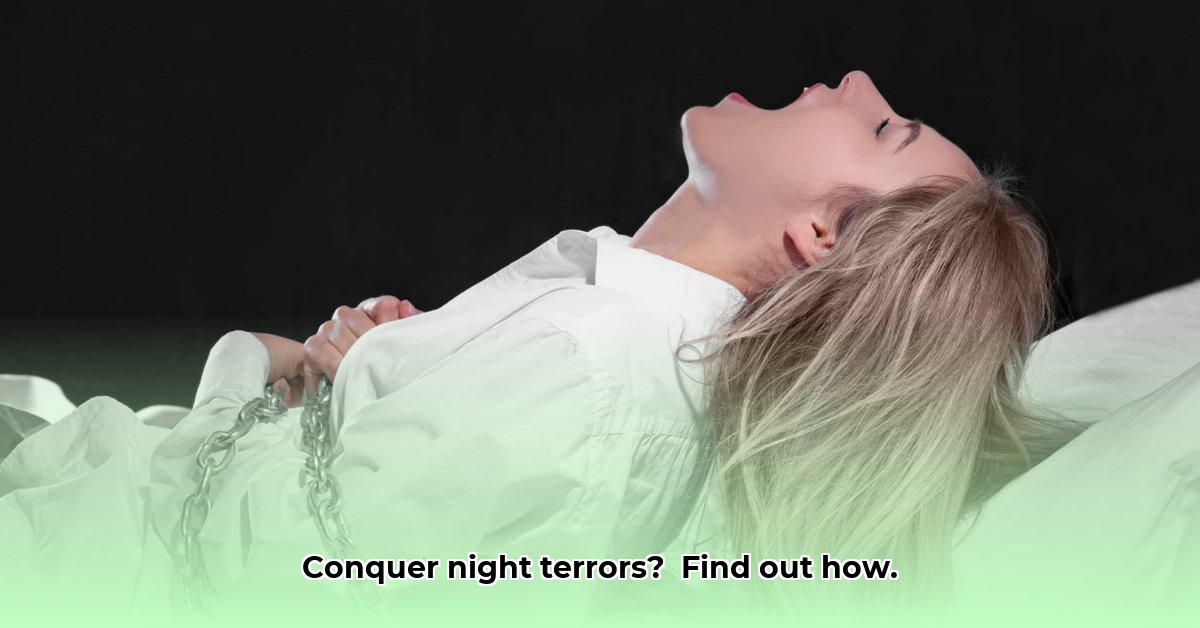
Ever woken up feeling completely paralysed, like you're trapped in your own body? That terrifying feeling is called slaapverlamming (sleep paralysis), and it's more common than you might think. Many South Africans experience these scary moments where they can't move, sometimes even seeing or hearing things that aren't there. This guide will help you understand what causes slaapverlamming, what those creepy symptoms mean, and, most importantly, how to manage it. We’ll explore different ways to deal with it and give you practical steps to prevent it from happening again. By the end, you’ll have the tools to take back control of your sleep and say goodbye to those night terrors.
Understanding Slaapverlamming (Sleep Paralysis)
Slaapverlamming is a temporary inability to move or speak while falling asleep or waking up. Often, it's accompanied by vivid hallucinations – scary sounds and images that feel intensely real. It’s a temporary glitch in your sleep's transition. You might feel a heavy pressure on your chest, making breathing difficult. Some people describe the feeling of something sitting on them, or even suffocation.
What Causes Sleep Paralysis?
While the exact cause isn't fully understood, several factors are linked to slaapverlamming:
- Disruptions in the sleep cycle: The transition between REM (rapid eye movement) sleep and wakefulness is often implicated. During REM sleep, your body is normally paralysed to prevent you from acting out your dreams – but sometimes this mechanism malfunctions.
- Stress and anxiety: High stress levels and anxiety are strong contributing factors.
- Irregular sleep patterns: Inconsistent sleep schedules disrupt the body's natural rhythms, increasing the risk.
- Underlying sleep disorders: Conditions like narcolepsy can significantly increase the likelihood of sleep paralysis.
Managing Slaapverlamming: A Step-by-Step Guide
The good news is that you can take control. Here’s a plan of action to reduce the frequency and intensity of slaapverlamming episodes:
Prioritise Sleep Hygiene: Getting enough quality sleep is crucial. Aim for 7-9 hours of sleep each night, maintaining a consistent sleep schedule, even on weekends. Create a relaxing bedtime routine – a warm bath, reading, or calming music – to signal your body it's time to rest. Avoid caffeine and alcohol before bed. "A regular sleep schedule is like a well-oiled machine; irregular sleep throws it off balance," says Dr. Sarah Jones, Sleep Specialist at the University of Stellenbosch.
Manage Stress and Anxiety: Stress is a major trigger. Find healthy ways to manage it: regular exercise, meditation, deep breathing, spending time in nature, yoga, or tai chi. “Stress reduction techniques are as important as getting enough sleep,” advises Dr. Michael Brown, Psychologist at the University of Cape Town. This is particularly important given the high stress levels many South Africans experience.
Keep a Sleep Diary: Track when you experience slaapverlamming, what you ate or drank, your stress levels, and anything else that might be relevant. This helps identify patterns or triggers. Identifying such patterns can be incredibly valuable in managing future episodes.
Seek Professional Help: If slaapverlamming is frequent or impacting your daily life, consult a doctor or sleep specialist. They can rule out any underlying conditions and might recommend Cognitive Behavioural Therapy (CBT). CBT can equip you with coping mechanisms and address negative thought patterns associated with this stressful experience.
Reducing the Risk of Hallucinations during Sleep Paralysis
The vivid hallucinations that often accompany slaapverlamming can be intensely frightening. While you can't entirely eliminate them, you can lessen their occurrence:
Minimise Screen Time Before Bed: The blue light emitted from screens interferes with melatonin production, making it harder to fall asleep and potentially increasing the risk of sleep disruptions.
Create a Soothing Sleep Environment: Ensure your bedroom is dark, quiet, and cool. Consider using earplugs or an eye mask to block external stimuli.
Practice Relaxation Techniques: Meditation, deep breathing, or progressive muscle relaxation can help manage anxiety and promote relaxation before sleep, reducing the likelihood of disruptive hallucinations.
Is Slaapverlamming Dangerous?
No, slaapverlamming itself isn't physically harmful. The distress comes from the fear and anxiety it generates. However, if it significantly impacts your life, don't hesitate to seek professional help.
Living Well with Slaapverlamming
Remember, you are not alone. Many people experience slaapverlamming, and it’s manageable. By focusing on better sleep habits, stress management, and seeking professional support when necessary, you can regain control over your sleep and enjoy more peaceful nights. Don't let it control you – you can take charge. By adopting these strategies, you can significantly reduce the impact of slaapverlamming on your life.